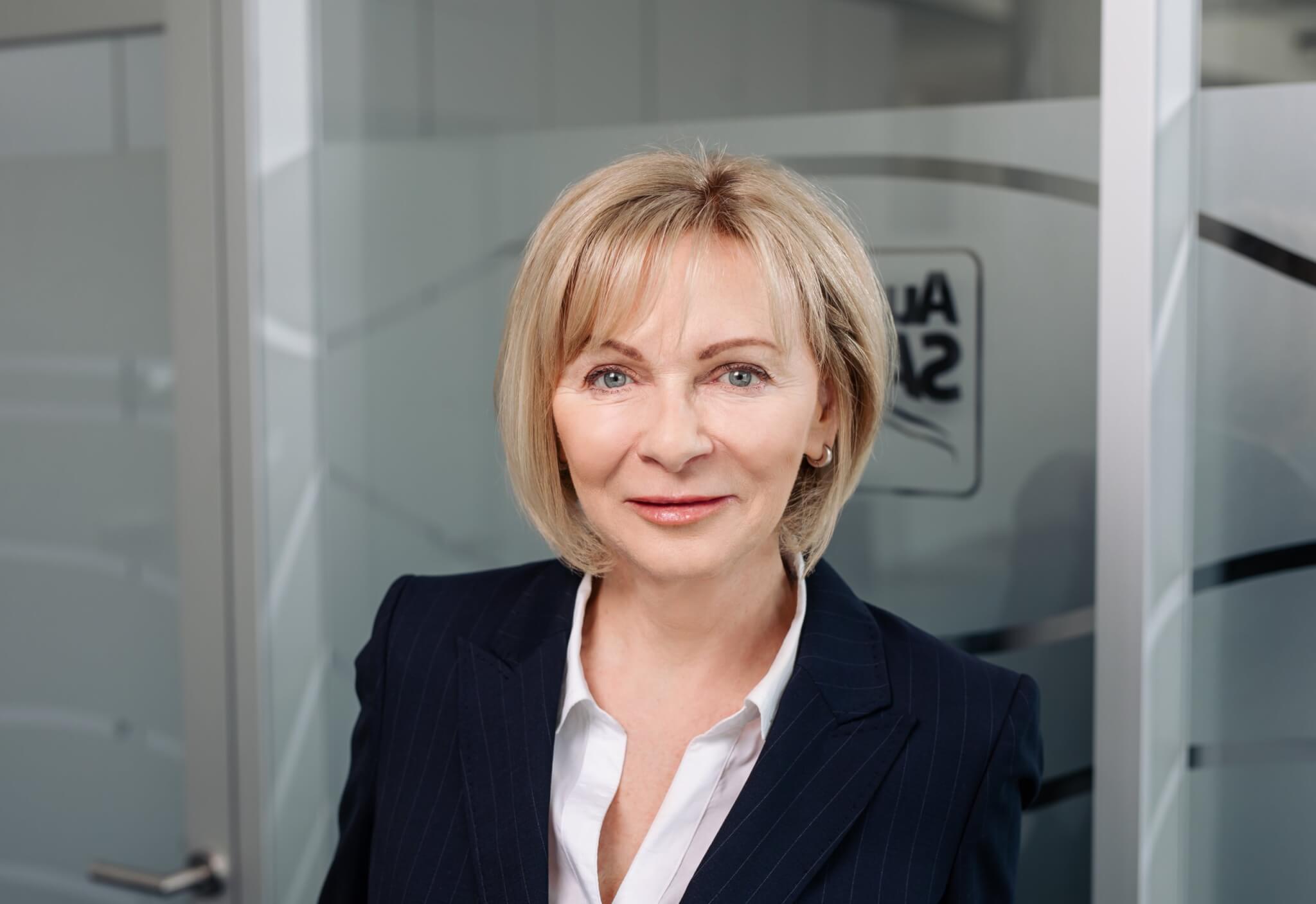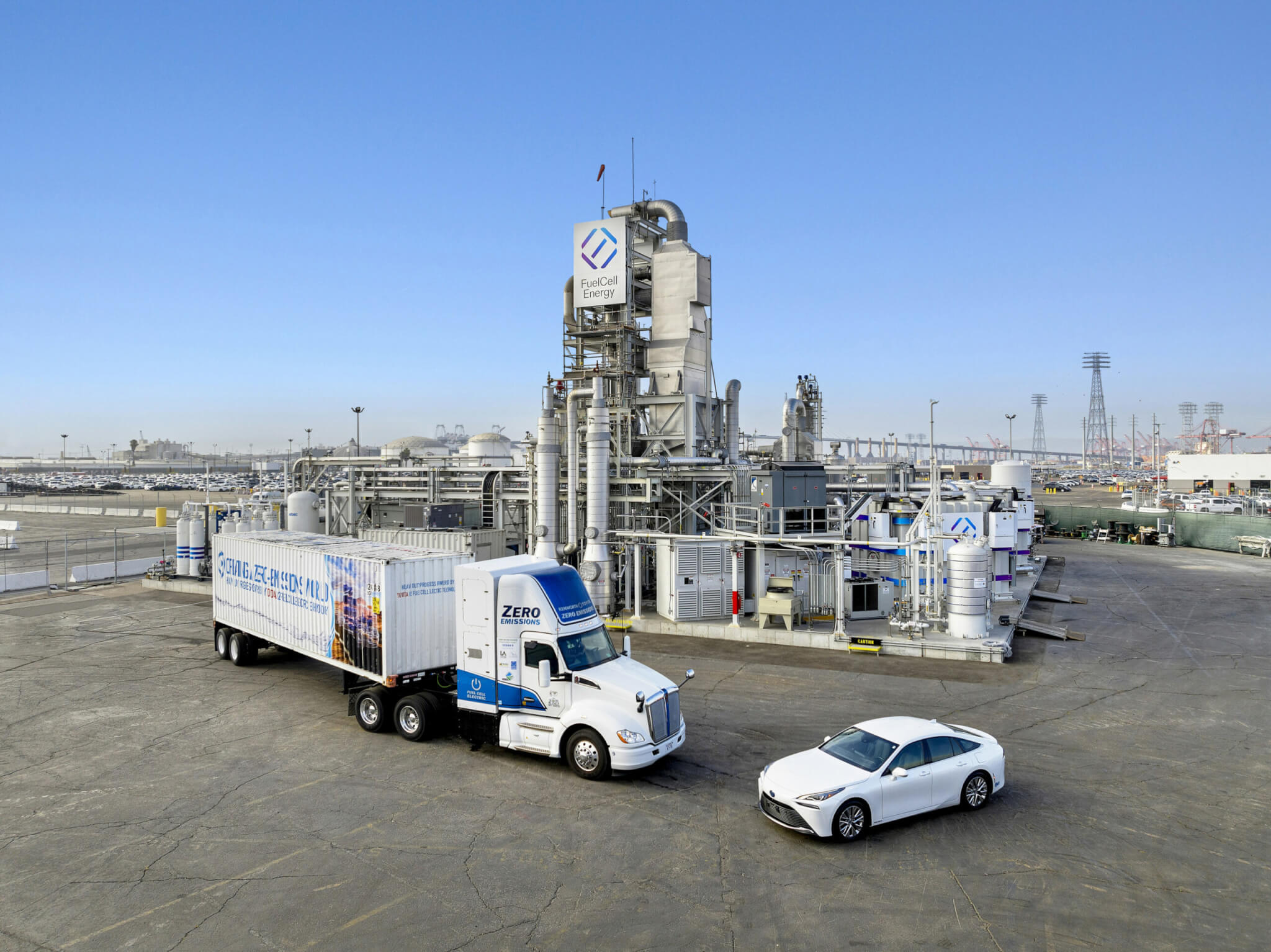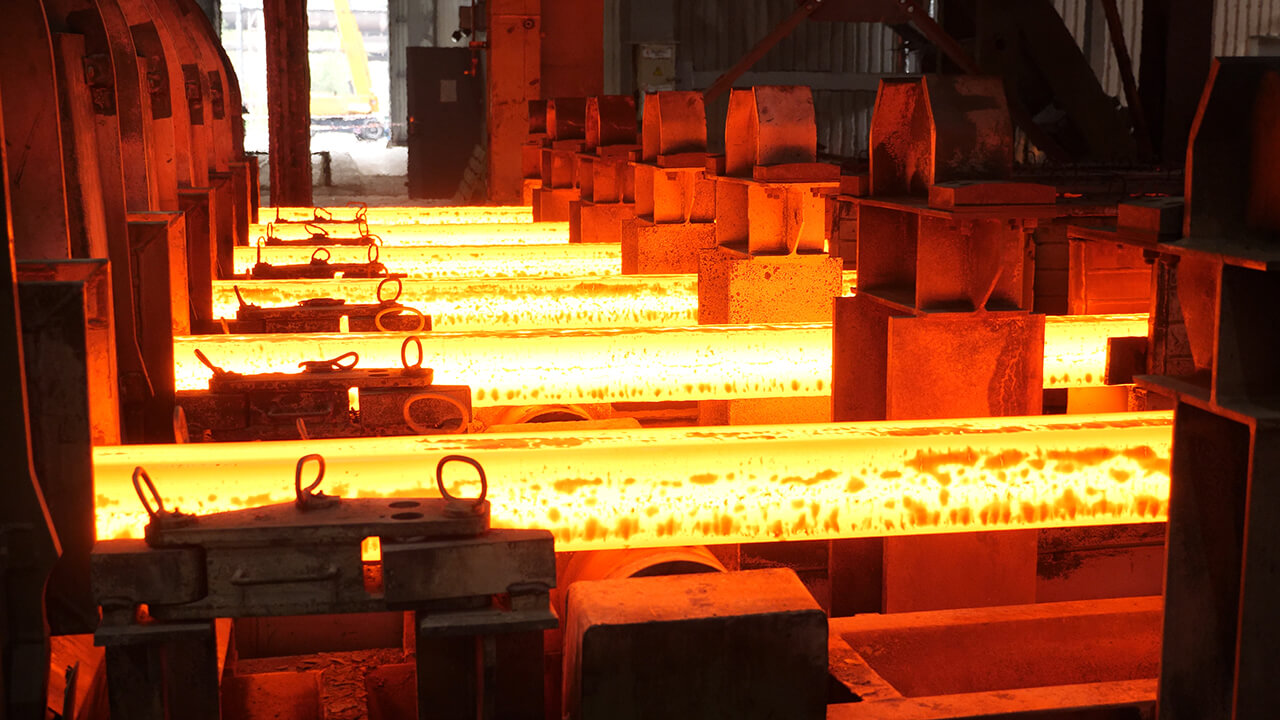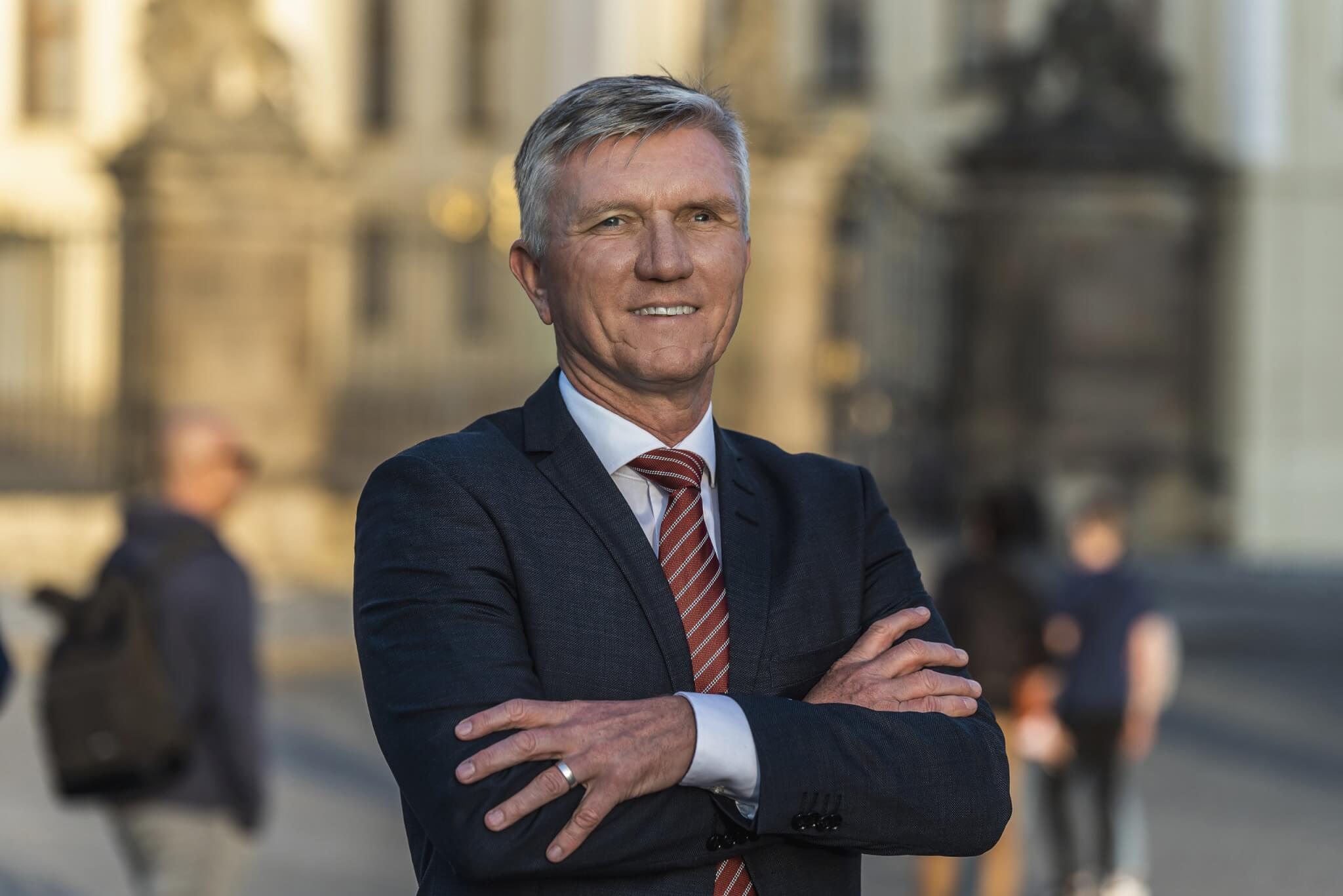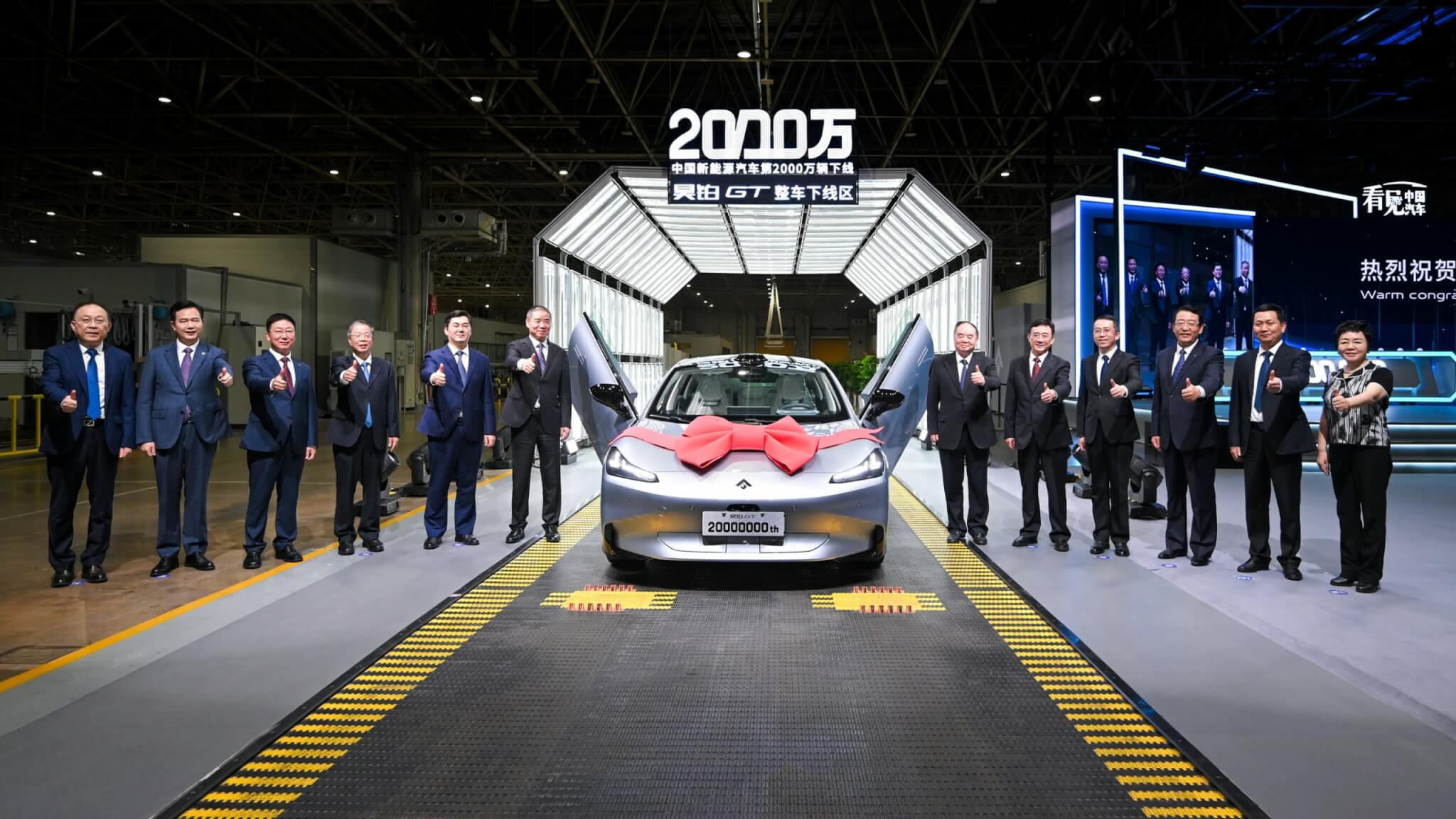At the TÜV SÜD Czech safety and electronics test centre in Bezděčín, test dummies still live in a special room with a constant temperature. Crash tests are and will still be needed in many cases. But the future of mobility testing is moving towards smart non-destructive testing and virtual simulations. The vocabulary of test engineers has recently been enriched, for example, by terms such as “a sled with a catapult and a digital twin of the test object” or “a soft-target robotic platform operating in a differential GPS network”. According to Jiří Socha, Director of Mobility and Proxy at TÜV SÜD Czech and a member of AutoSAP’s Board of Directors, with the advent of autonomous systems and cybersecurity, new testing methods will proliferate.
The motto of your division at TÜV SÜD Czech is “We enjoy moving the world of mobility”. What do you mean by that?
TÜV SÜD’s mission has been the same and binding throughout our more than 100-year history: we protect living beings and the environment from the negative impact of new technologies. Sometimes, and for some, it can be difficult to adapt to and trust these new technologies. We, through our tests and certificates, provide this trust to representatives of companies and the public. By not settling for the status quo, following trends and developing new test procedures all the time, we also anticipate further technological developments and thus help to move them forward.
And that motto also means that we at TÜV SÜD really enjoy working on these projects.
How are the new trends in the automotive sector reflected in your activities overall?
I’ll start with what’s not changing. TÜV SÜD’s mission is still the same. The procedures we use in our work are also fundamentally the same: We look at an industrial unit, a product or parts of a product, and either test it or otherwise assess it and comment on whether it complies with regulations and safety rules. And if it is, we issue a certificate. In automotive parlance, that certification act is the homologation of the vehicle.
As far as new trends are concerned, these are strongly reflected in our activities. In addition to the still predominant testing of traditional combustion engines, today it is also the testing of alternative drives, both hybrid and battery, as well as those with fuel cells. The share of these tests will obviously grow. And the other new area is advanced driver assistance systems, or if you like, future autonomous driving. All this is linked to the use of new methods in testing.
You mention new testing methods. When I visited your test centre in Bezděčín, I was interested in one of them: non-destructive tests, which can in some cases fully replace conventional crash tests. How does the crash simulation equipment work?
In our passive safety laboratory in Bezděčín, we use equipment on which either the entire bodywork or the relevant part of the vehicle is subjected to the simulated loads that it would be subjected to in a real frontal or side impact.
” TÜV-SÜD protects against the negative effects of new technologies.”
In a real crash test, the car is accelerated against a solid barrier on a test track. The result is a crash whose parameters inside the test car we are able to measure, convert and program into our equipment and reverse the test by accelerating the test specimen instead of decelerating it. Thus, we simulate the impact so that the so-called catapult, which is part of the test sled, “shoots” the vehicle with a precisely controlled force waveform, with the result that the simulated impact has the same effects on the vehicle interior and occupants as a real impact with a solid barrier.
As in the real test, the vehicle or part of it is fitted with a number of sensors. Data from these are stored in black boxes during the test. This data is then used to evaluate what the interior of the vehicle has “experienced”.
And what the dummy inside has experienced.
Yes. Even the test dummy is equipped with many sensors to evaluate its biomechanical response – often the most important part of the crash test. Even though the car doesn’t actually hit any obstacles, you can see how the airbags activate and how the restraints would affect the dynamic response of a person inside the vehicle. You can then use the data to fine-tune the timing of airbag activation or the shape of the airbag, as well as the behaviour of seatbelt pretensioners and other vehicle components.
The advantage of this method is its excellent repeatability. But the most important thing is that you don’t destroy the prototype of the new car in each test as you would in a real crash test. The only things that are destroyed in such tests are, of course, the restraint systems that are activated, but not the bodywork or perhaps the whole vehicle. All this saves time and money.
How have mannequins changed recently? How are they different than they were twenty years ago?
The mannequin has always been an acceptable simplification of the human body. Today, we have different generations of mannequins available, they are even specially made for certain types of impacts. Some are more sensitive to frontal impact, others to lateral impact. Developers and manufacturers have gone to great lengths to carefully replicate the different parts of the human body. The mannequin must provide some biofidelity, that is, similarity to the behavior of the human body, so that it can document what an impact with a human body would do.
There are certainly more variables that are measured on the manikin, hundreds of them today. For example, head acceleration in three axes, neck bending moments, pelvic loading, chest compression, knee displacements, possible damage to the femurs and many other quantities are measured.
Previously, a thick bundle of cables led from the sensors to each manikin, through which the data, i.e. the measured values, flowed to the black boxes. Nowadays, no cable is needed, the dummy stores the data “in itself”, which has the advantage that its movement during impact is not affected by the cable bundle. The data is then downloaded and the biomechanical response of the dummy is evaluated. The output is information about what injury would occur in a given impact.
How are the measured values evaluated?
There are clear international biomechanical criteria given by fixed relationships that determine the conversion between the measured physical quantities and the corresponding injuries that would occur. There is no room for our interpretation here.
Is the method of acceleration testing on a sled runway with a catapult something unique, or are such tests already standard in the world?
A facility like ours is the best that testing technology has to offer in the field today. It is one of the most advanced methods used in tests of this kind.
But TÜV SÜD is also developing its own testing methods or improving existing ones. Can you give an example?
Staying with the non-destructive tests mentioned above, we have developed a unique European procedure that combines this non-destructive physical test with virtual simulation, over and above what is standard today. In addition to the physical test, we create a digital twin of the entire system in the virtual simulations, which exchanges information with reality on the sled in successive iterations. This is how we simulate, for example, side impact events. This gives us an idea of the deformation of the vehicle’s side structure in a crash without destroying the whole vehicle. TÜV SÜD Czech is the bearer of this knowledge.
The main benefit of these methods is the saving of time and costs.
How often and where can virtual reality be used in testing?
Wherever it is possible to reliably collect data, correctly describe the unit under investigation and create a mathematical model. Of course, this model is always a simplification of the real system. Simplifications are only possible where they will not affect the simulation of the essence of the process you are observing. The mathematical model – the digital twin – must then be validated by means of tests to ensure that its behaviour is identical in important parameters to that of the real system.
The use of virtual procedures is not only the next natural step in passive safety evaluation, it will play a particularly important role in the testing of autonomous driving systems.
Staying with passive safety testing, isn’t creating a digital twin more expensive than a real crash test?
That is a good question. Creating a mathematical model and validating it are obviously a considerable cost, but the return and appropriateness of such an initial investment will become apparent once a certain number of simulations have been carried out. In the real world, more and more vehicles would be destroyed, whereas with virtual reality we can create an unlimited number of combinations to verify, for example, the correct airbag timing under different crash conditions.
Or a specific example for a larger vehicle: when homologating a bus, you have to assess, among other things, the strength of its load-bearing structure. This is assessed by rolling the bus over on its side on a test ramp and then assessing the survival space for the passengers. Such a test will, of course, irrevocably destroy the bus and the test specimen goes to the scrap heap after the test. Especially for buses, which are produced in the thousands every year, virtual tests mean a great saving in relation to the number of units sold. Compared to passenger vehicles, which are an order of magnitude higher in series and which are therefore produced and sold in much larger numbers, this saving is of the greatest importance to manufacturers.
You said that the use of virtual simulations in testing autonomous driving systems is important.
Yes, this is a trend that is developing rapidly. Virtual simulations are mainly used in the development phase of advanced driver assistance systems, which should lead to fully autonomous driving in the future. It is therefore clear that the systems must be tested in many situations that are difficult to physically create and then test in a real environment in the full range of imaginable variants. Thus, it is very difficult to fulfil the ambition that we will be able to physically test all scenarios that an autonomous system may face. In the world of virtual simulations, on the other hand, we can simulate all reasonably predictable combinations of traffic situations, including other vehicles, diverse traffic infrastructure, or even pedestrians, with orders of magnitude different space and time requirements.
“The main benefit of virtual simulations is time and cost savings.”
In autonomous systems, we can therefore talk about a kind of pyramid of tests. At the top, in my estimation, there will be dozens of mandatory homologation tests that will test the vehicle in basic driving conditions, which will certainly be largely physical and, in the future, virtual.
The second layer will be development tests beyond the approval obligations. Manufacturers will certainly want to test systems in, for example, ‘harsher’ conditions than the mandatory legal requirements. These tests will be a combination of physical and virtual testing and will number in the hundreds to thousands.
The base of the pyramid will include all other scenarios that need to be considered in the design of the system, these will be tested with the virtual model. Because, as we said, physically it would not be possible from a time or financial point of view.
Is it fair to say that virtual simulations in the testing of autonomous systems are already a regular part of the tests at TÜV SÜD?
I have to commend the entire TÜV SÜD Group for starting to prepare for the arrival of autonomous vehicles early on, and I dare say that today we are the market leader among test organisations in the field of virtual simulations for automated driving. What’s more, we are very skilled at combining virtual tests with physical ones.
We test all assistance systems, Advanced Driver Assistance Systems, ADAS for short, according to current legislation, manufacturers’ methodologies or global consortia such as EuroNCAP. These include tests for advanced braking systems, adaptive cruise control or lane-keeping assist systems.
The Czech Republic has been selected by your group as one of the launch sites for the Highly Automated Driving project. What does this mean for you?
Yes, we were selected by the Munich headquarters of TÜV SÜD together with Germany and Singapore. We focus on the use of simulation tools to model the behaviour of vehicle systems, including functional safety and cyber security.
We have sophisticated technology in the area of physical vehicle testing. The TÜV SÜD Czech test team is equipped with a soft-target robotic platform and a steering and pedal robot. All equipment operates in a differential GPS network with high accuracy in determining position, speed, acceleration and other parameters. Again, collision testing is conducted without the risk of destroying the vehicle under test or the test equipment.
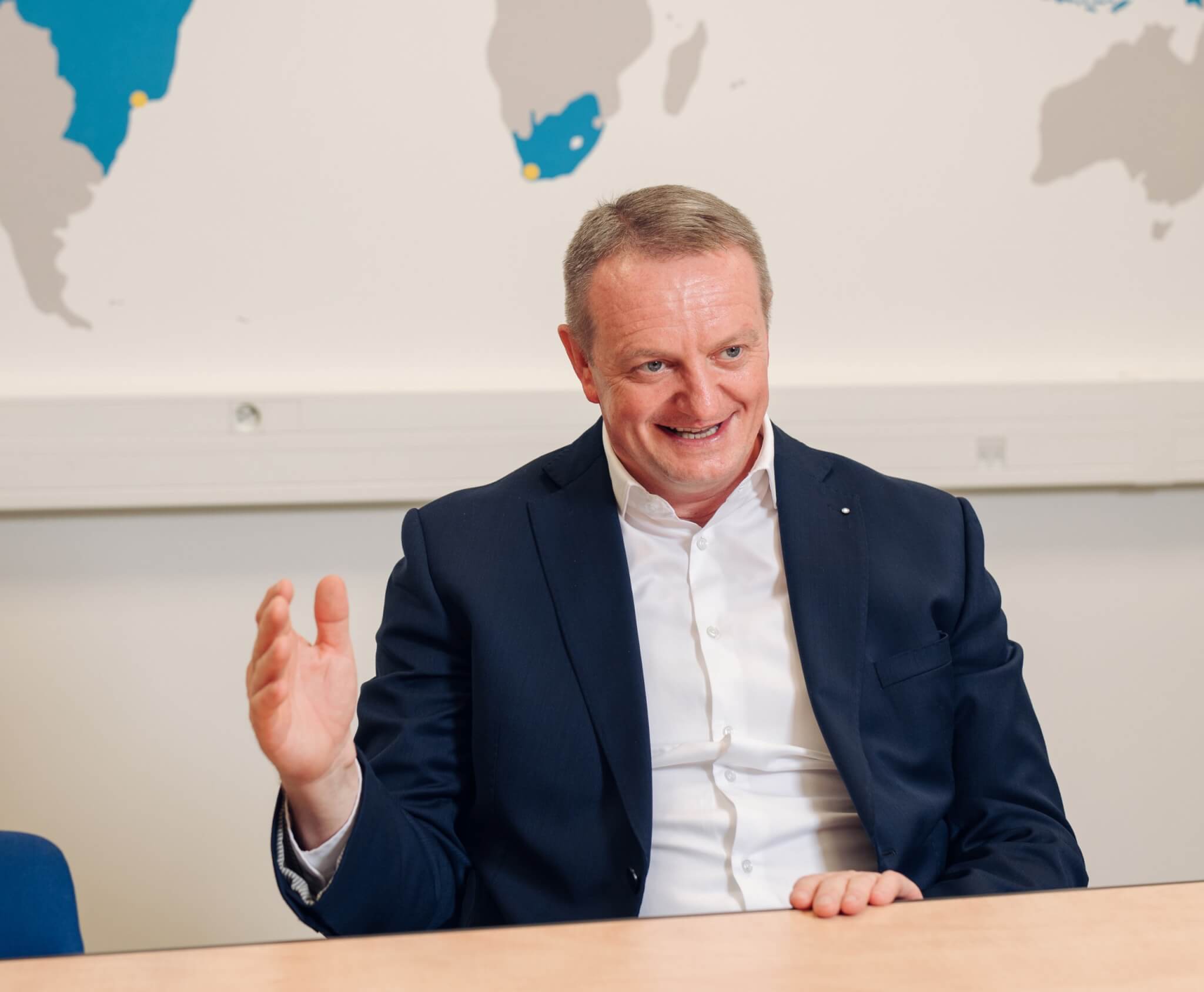
Jiri Socha. He graduated from the Department of Automotive Engineering at the Faculty of Mechanical Engineering of the Czech Technical University in Prague and spent part of his doctoral studies at the German Centre for Aeronautics and Astronautics near Munich. After his return, he joined the then Institute for Motor Vehicle Research (today’s TÜV SÜD Czech) as a specialist in mathematical simulations, where he worked in various positions, mainly on active and passive vehicle safety. Since 2014, he has been the Director of the Mobility Division of TÜV SÜD Czech and the company’s Proxy. He has been a member of the Board of Directors of the Automotive Industry Association for five years and since June this year he has also been a member of the Czech Government Council for Road Safety. Photo: Barbora Mráčková
For which clients and what specifically are you testing?
All I can say is that we test automated driving systems for leading European brands. However, it seems to me that the autonomous driving area is suffering a bit of a loss of attention at the moment – perhaps still under the influence of the covid and its impact on supply chains, or also because much of the attention of vehicle manufacturers is rightly focused on the tightening of emissions regulations under the Green Deal and the related area of alternative drives and electromobility.
You mention electromobility. We have not yet looked at how the advent of new drives is reflected in your work.
We are already involved in measuring the performance and consumption of electric vehicles, which is actually similar to what we measure for combustion engines. We do not, of course, assess the emissions of electric vehicles, but we also assess their range. This is done today with one laboratory cycle according to the WLTP standard. However, I expect that in the future, there will certainly be more and more demanding tests, which will include, for example, more significant temperature fluctuations and other influences that are not monitored today. The tests will therefore be more adapted to real-world conditions. That is where I see the future.
Does TÜV SÜD also test the batteries themselves?
Yes, but not in the Czech Republic. We have battery testing laboratories in Germany and Asia.
Is there anything else in the field of mobility that is not being done in the Czech Republic, unlike in Germany?
Yes. The Mobility division in Germany has traditionally been strong in carrying out technical inspections of vehicles, known here as STK. This is an area that we have not occupied at all in the Czech market because TÜV SÜD came in at a time when the market had already been dismantled by our competitors. The strategic decision was therefore not to open this area of activity yet.
Have you had any Chinese cars pass through your testing facility?
We haven’t tested any Chinese cars yet. But we are working with our Chinese colleagues and have already tested some components for them.
Do you have any experience of testing components or systems for fuel cell cars?
Yes. For example, we are carrying out tests to check the behaviour of hydrogen tanks in an accident. The test is carried out in the way we have already discussed – by simulated impact on a sled runway. However, we have also tested and homologated buses with combined propulsion, which included hydrogen fuel cells.
In addition to hydrogen, we are also able to test components for vehicles running on other alternative gaseous or synthetic liquid fuels.
It is clear that your work is influenced by technological progress in general, but also by new regulations and legislation, both Czech and European. As far as new regulations are concerned, do you receive information in time to prepare for this?
It is true that the development of the regulatory base often means some additional investment and retrofitting for us. But it also brings us new competencies, so if we want to continue to be the market leader in Central Europe and play the role of a competent partner to the European automotive industry, it is not enough to simply adapt to its development. We are therefore trying to play an active role and, for example, to show future trends in the development of test methodologies. This brings me back to our slogan that we enjoy moving the world of mobility.
Let me make one more comment on the advent of the closely watched changes to the emissions regulations: it would obviously be more pleasant for us and for the automotive manufacturers if the forthcoming changes were announced in a timely and systematic manner. An example is the Euro 7 standard, the form of which was unknown for a long time and the date on which it should come into force is more a matter of political agreement. This makes life very difficult for us and for manufacturers, because it is impossible to prepare for stricter conditions from one day to the next.
“It would certainly be more pleasant for TÜV-SÜD and the automotive industry if upcoming regulatory changes were announced in a timely and systematic manner.”
Several years ago, TÜV SÜD Czech was involved in preparations for the establishment of a national polygon in the Czech Republic. Why do you think these plans ended without result?
You have the right information. TÜV SÜD Czech did indeed play a very active role in the “pre-Covid” era in preparing for the building of a national polygon that would be available to the entire Czech automotive industry and universities to test various stages of autonomous vehicles. The intention was quite far away, we were already starting to prepare the so-called feasibility study in cooperation with the transport faculty of the CTU. Then came the pandemic, austerity and Minister Havlíček stopped the project.
Today, individual entities are addressing the need for test areas on their own. Whether this is a good thing or not, I do not dare to judge today without knowing the data on the impact of such a decision on the Czech automotive sector.
Where do you test?
We have a long-term lease of a test area at the Mnichovo Hradiště airport and we also use the Škoda test polygon in Úhelnice. We even have our own laboratory for active safety testing on the premises of this polygon.
One of the newest fields – even in testing – is cybersecurity. And this also applies to vehicle systems.
Cybersecurity needs to be addressed for those systems where it can be assumed that they can be attacked from the outside and that such targeted intervention can lead to data leakage or even influence the behaviour of the affected system. In the case of vehicles, this can be imagined, for example, by an outsider taking over part or all of the driving.
What do such cybersecurity tests look like? Are hackers hired by you trying to penetrate the system?
Also. Cybersecurity is already reflected in UNECE regulations and its assessment is based on several pillars. The first pillar assesses the manufacturer’s business management system. That is, how the company operates overall and whether the product under test is created in an environment that provides the prerequisites for it to be secure. The second pillar already focuses on the vehicle and studies the overall architecture of the control units and the internal control logic of the vehicle.
The third pillar is the actual penetration test that you mentioned. It is carried out by so-called ethical hackers who try to hack the system. If they are unsuccessful and everything goes well, or if the risk of breaking in is judged to be acceptable, the certification act follows.
So you already have your ethical hackers?
We’re building a penetration testing lab right now. Yes, we already have two ethical hackers.
You are a board member of the Automotive Industry Association, and in that capacity you represent AutoSAP on the BESIP board. What is the main agenda you are dealing with?
BESIP is the guarantor of the implementation of the National Road Safety Strategy. The aim is to increase safety and significantly reduce the number of people killed and seriously injured on roads. Traffic safety is based on three basic elements: the driver, the traffic infrastructure and the vehicle. Simply put, I represent the vehicle in BESIP, or more precisely, its manufacturer. What is being talked about a lot at the moment is assistance systems in cars. Last time we discussed how vehicles can read road signs. The aim is to ensure that there is cooperation between vehicle manufacturers and those responsible for traffic infrastructure and driver education so that we have as few tragic consequences of traffic accidents as possible. Will the advent of autonomous vehicles reduce accidents? I see huge potential there. It is true that today these systems are not yet perfect, but we are only at the beginning of the journey. Every technology needs time to be reliable enough to gain the trust of users.
ABOUT TÜV SÜD
TÜV SÜD was originally founded as an association for the inspection of steam boilers in the 1860s in Mannheim, Baden. Today, it is a major player in the field of quality, safety and protection of people, the environment and property against technology-related risks. It focuses on virtually all areas of human life – from the consumer goods industry to the chemical and other industries to real estate.
TÜV SÜD’s global network has 1,000 offices worldwide and employs 25,000 people. TÜV SÜD Czech was founded in the 1990s and today employs 400 people. Its primary focus is to provide independent verification and certification of products and processes. It also proposes solutions throughout the entire life cycle of a company, regardless of the sector in which it operates.
The Mobility division has long been the best performing part of the company in terms of turnover and number of employees. The other divisions are Industry Service (focusing on industry, including energy), Business Assurance (assessing corporate management systems), Real Estate/Buildings (assessing buildings for energy performance, for example) and Product Service (assessing food and feed safety). The Mobility division now focuses on development and Conformity of Production tests in addition to traditional approval tests. The tests cover virtually all major components and subsystems of the vehicle or the vehicle as a whole. Today, test procedures also cover products in the field of alternative drives, electric mobility, autonomous driving or cyber security. TÜV SÜD Czech’s customers are primarily final vehicle manufacturers and TIER 1 suppliers.

TÜV SÜD can bridge two worlds: in addition to the physical test, it creates a digital twin of the entire system. Photo: TÜV SÜD
Contact
Next articles and interviews
Next articles and interviews
+ Show



